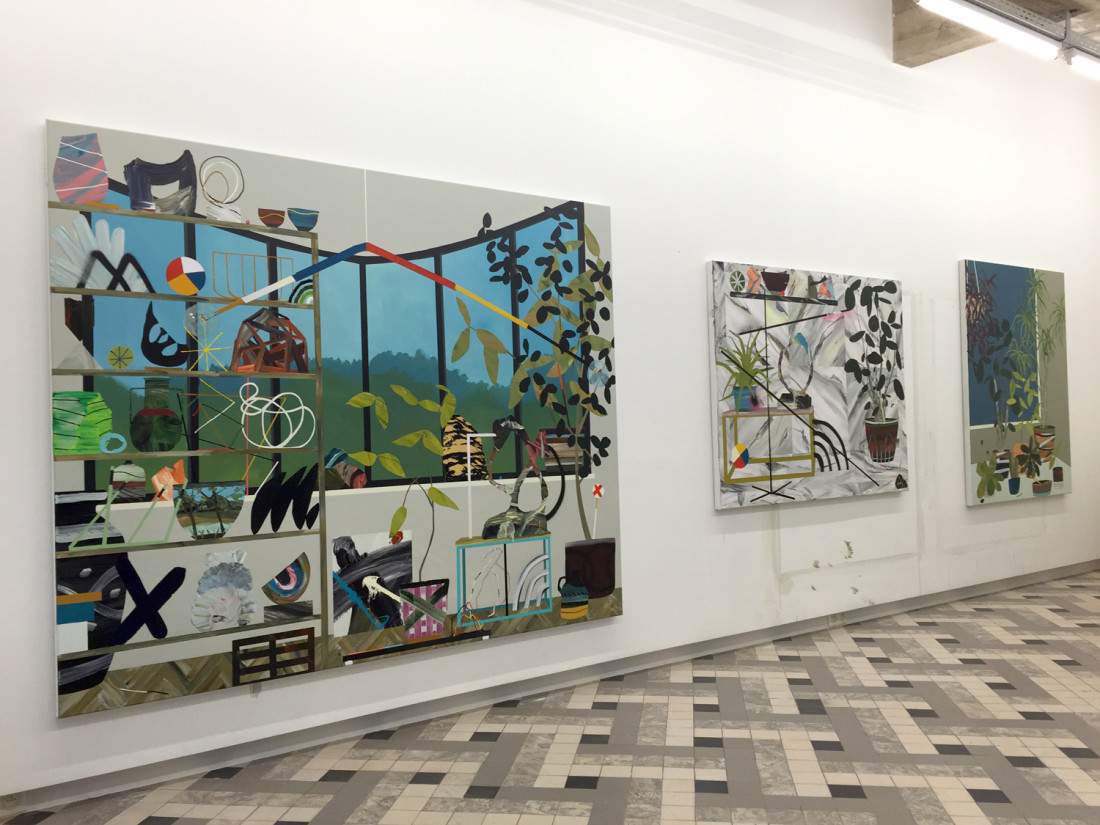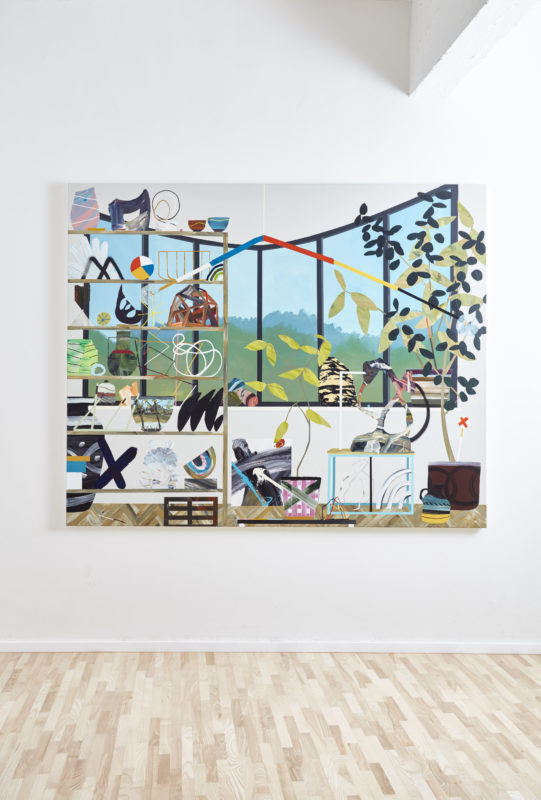Paul Wackers

“I tried to tease out the subjects from the forms in other paintings and then see how they worked or failed in different situations. I did not actively reference much outside of my studio, just my rocks and plants and ceramics that I have around me as a source.”
Interview by Alison Mazur, Drop Magazine, March 2014.
The New York based artist (1978) is primarily a figurative painter, who tends towards slight abstraction. His pictures engage with ‘non-places’, vegetable landscapes with bookshelves and window ledges, offering an insight into a parallel reality. Deserted spaces reflect the artist’s inner-perception and are reminiscent of the still-life’s by the well-known Dutch masters e.g. Willem van Aelst.
At first glance, the regular, geometric order of the objects seems to be maintained. Cans, candleholders and empty vases fill up the interior spaces. But if we look again, we notice straight and twisty lines disturbing the familiar impression of banality.
The geometric aspects of the composition coexist side by side with the organic elements. The traces of individual interpretation become visible as a sophisticated abstract language of chaos and order. By this means the obscure inner impressions melt into the existing phenomena.
“I tried to tease out the subjects from the forms in other paintings and then see how they worked or failed in different situations. I did not actively reference much outside of my studio, just my rocks and plants and ceramics that I have around me as a source.”
Interview by Alison Mazur, Drop Magazine, March 2014.
L’artiste new-yorkais Paul Wackers (1978) est avant tout un peintre figuratif, qui tend toutefois vers une abstraction subtile. Ses images présentent des « non-lieux », paysages végétaux, étagères de livres et fenêtres, offrent un aperçu d’une réalité parallèle. Les espaces désertés reflètent la perception intérieure de l’artiste et rappellent les natures mortes du renommé maître hollandais, Willem van Aelst.
Au premier coup d’œil, la régularité et l’ordre géométrique des objets semble respectés. Les boites, les bougeoirs et les vases vides remplissent les espaces. Mais si on regarde à nouveau, on remarque des lignes tortueuses et inquiétantes qui viennent perturber l’impression familière de banalité.
L’aspect géométrique de la composition coexiste aux côtés des éléments organiques. Les traces de l’interprétation personnelle deviennent visibles, tel le langage sophistiqué et abstrait du chaos parmi l’ordre. De cette manière, les impressions obscures se mélangent aux phénomènes existants.
“I tried to tease out the subjects from the forms in other paintings and then see how they worked or failed in different situations. I did not actively reference much outside of my studio, just my rocks and plants and ceramics that I have around me as a source.”
Interview by Alison Mazur, Drop Magazine, March 2014.
Paul Wackers (1978) is gevestigd in New York en is vooral een figuratieve schilder, die neigt naar gematigde abstractie. Zijn beelden focussen op ‘non-places’, groentenlandschappen met boekenplanken en vensterbanken, die een kijk bieden op een parallelle realiteit. Verlaten ruimtes weerspiegelen de innerlijke leefwereld van de artiest en doen denken aan de stillevens van de bekende Nederlandse meesterschilders zoals Willem van Aelst.
Op het eerste zicht lijkt het alsof de gewone, geometrische vorm van de objecten bewaard is gebleven. Blikken, kaarsenhouders en lege vazen vullen de binnenruimtes. Maar als we opnieuw kijken, dan merken we dat rechte en kronkelende lijnen het vertrouwde zicht van de banaliteit verstoren.
De geometrische elementen van de compositie gaan hand in hand met de organische elementen. De sporen van individuele interpretatie worden zichtbaar als een gesofisticeerde, abstracte taal van chaos en orde. Op die manier versmelten de obscure, innerlijke indrukken met de bestaande fenomenen.


